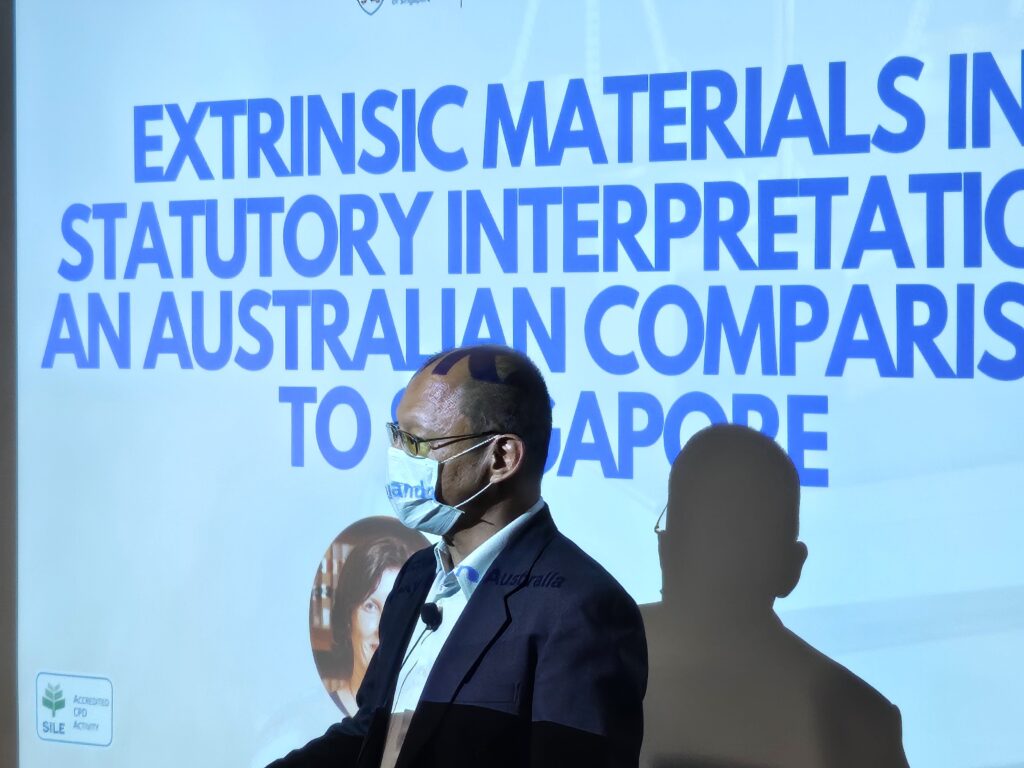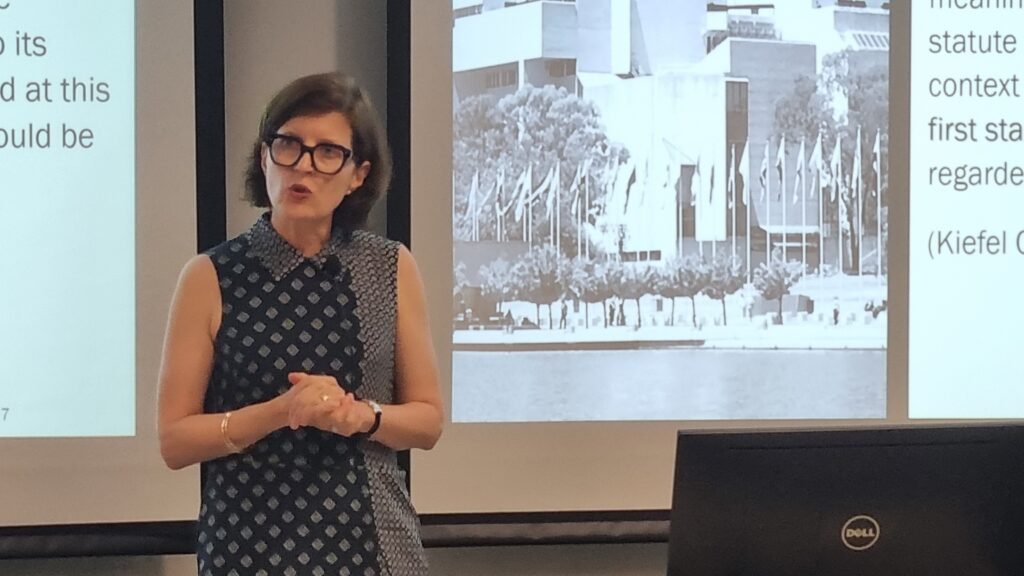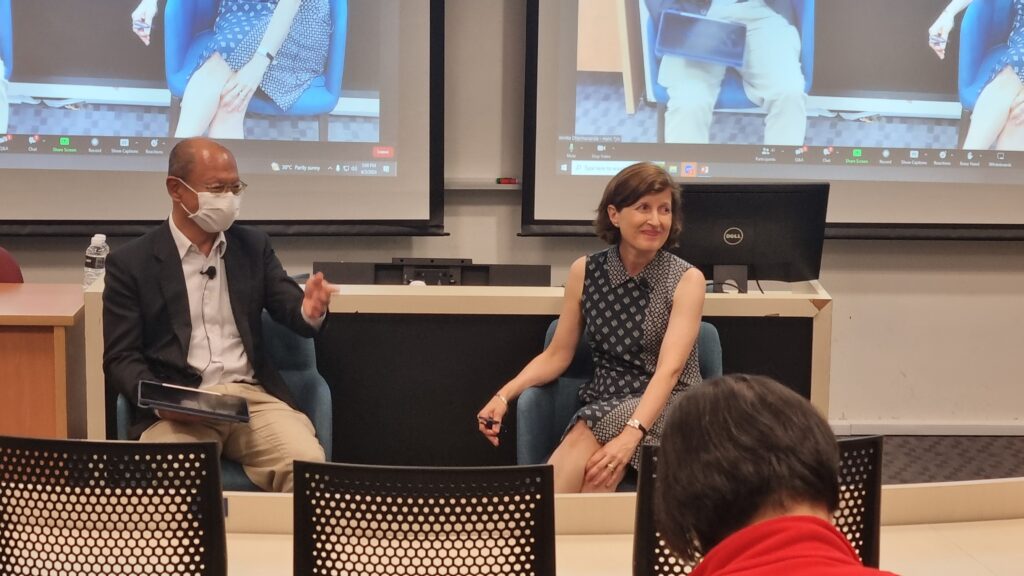Media - News
- Media
- Extrinsic Materials in Statutory Interpretation: An Australian Comparison to Singapore
Extrinsic Materials in Statutory Interpretation: An Australian Comparison to Singapore
Dr Jacinta Dharmananda of the University of Western Australia presented a seminar titled ‘Extrinsic Materials in Statutory Interpretation: An Australian Comparison to Singapore’ on 6 March 2024. This seminar was moderated by Professor Hans Tjio.
Dr Jacinta began her talk by defining the term ‘extrinsic materials’. She stated that it is not a legal term of art in Australia, but this term tends to refer to a subset of parliamentary and pre-parliamentary materials that have a connection to a bill presented in Parliament. The term sits within the broad definition of extrinsic materials which covers any materials that exist beyond the four corners of a statute.
She then provided a brief modern history of extrinsic materials in Australia, focusing on sections 15AA and 15AB of the Acts Interpretation Act 1901 (Cth) (“AIA”). Section 15AA was first introduced in 1981 to address the perception of overly literalist interpretations by its High Court judges and the UK influence of purposive interpretation. Regarding section 15AB, the 1984 amendment was introduced to recognise that a statute is a policy tool of the government and to enable the judiciary to see what Parliament meant so that it could implement what Parliament intended. This was comparable to Section 9A of the Singapore Interpretation Act 1965. Section 15AA of the AIA was further amended in 2011 to overcome the binary choice presented in prior wording of the provision.
Dr Jacinta moved on to the Australian common law position regarding statutory interpretation, citing the case of CIC Insurance v Bankstown Football Club (1997) 187 CLR 384,408. This was followed in SZTAL v Minister for Immigration and Border Protection (2017) 262 CLR 362, 368. Based on the foregoing, there were now two gateways to the usage of extrinsic materials in statutory interpretation. The first was based on section 15AB which was premised on the rationale of the statute as a policy tool of the government, while the second was based on the rationale of linguistic communication.
She next shared the findings of her quantitative empirical research project. It was found that a large component of High Court cases dealt with issues of statutory interpretation. Further, access to extrinsic material in Australia is now a non-issue due to easier availability of such materials. This also rendered concerns relating to prolonging legal or other proceedings in section 15AB AIA moot. However, the concern was now how to use and assess the weight of these extrinsic materials as well as how to distinguish between different types of extrinsic materials.
In the recent case of Harvey v Minister for Primary Industry and Resources [2024] HCA 1, Justice Edelman posited the simultaneous consideration of both section 15AB AIA and the common law position. He elaborated on section 15AB which was intended to be non-exhaustive and facilitate the common law development. In examining context, extrinsic information, including reasonable expectations of compliance by Parliament with social norms or fundamental common law principles were often employed in the process of interpretation. Dr Jacinta opined that Justice Edelman’s views did not offer much guidance on the contextual application of these principles. She suggested that the US institutional approach of looking at the statute as part of the legislative process rather than as a speech act would enable better assessment of the probative value of secondary materials.
The seminar concluded with a lively question and answer session.

Prof Tjio Hans giving the welcome speech

Dr Jacinta Dharmananda presenting

Prof Tjio Hans moderating a lively Q&A

